One of the most awaited festivals for youngsters is Holi. It is the festival which brings people together to celebrate the victory of good over evil. The festival was celebrated with fervour and joy at few hotels in city which had organised grand holi celebrations. The city also witnessed college students celebrating the festival of the colours with their friends. Seervi Samaj in Mysuru had also organised traditional celebrations of holi at its premises on KRS road. This Weekend Star Supplement is about the Holi celebrations, its significance and yummy sweets for the occasion.
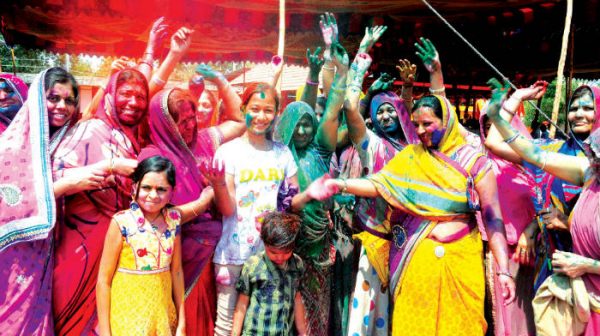
Seervi Samaj Celebrated holi at it premises on KRS Main Road in Gokulam.
Holi, the festival of colours
Holi is an important spring festival for Hindus. To many Hindus and some non-Hindus, it is a playful cultural event and an excuse to throw coloured water at friends or strangers in jest. Holi is celebrated at the end of winter, on the last full moon day of the Hindu luni-solar calendar month marking the spring, making the date vary with the lunar cycle. The date falls typically in March, but sometimes late February of the Gregorian calendar.
The festival has many purposes; most prominently, it celebrates the beginning of Spring. In 17th century literature, it was identified as a festival that celebrated agriculture, commemorated good spring harvests and the fertile land. Hindus believe it is a time of enjoying spring’s abundant colours and saying farewell to winter. To many Hindus, Holi is an occasion to renew ruptured relationships, end conflicts and rid themselves of accumulated emotional impurities from the past.
It also has a religious purpose, symbolically signified by the legend of Holika. The night before Holi, bonfires are lit in a ceremony known as Holika Dahan (burning of Holika) or Little Holi. People gather near fires, sing and dance. The next day, Holi, also known as Dhuli in Sanskrit or Dhulheti, Dhulandi or Dhulendi is celebrated. Children and youth spray coloured powder solutions (gulal) at each other, laugh and celebrate, while adults smear dry coloured powder (abir) on each other’s faces. Visitors to homes are first teased with colours, then served with Holi delicacies (such as puranpoli, dahi-bada and gujia), desserts and drinks. After playing with colours, and cleaning up, people bathe, put on clean clothes, and visit friends and family.
Like Holika Dahan, Kama Dahanam is celebrated in some parts of India. The festival of colours in these parts is called Rangapanchami, and occurs on the fifth day after Poornima (full moon).
Holi festival has religious and historical significance in Hindu texts. According to legends, King Hiranyakashyapu used to hate Lord Vishnu and threatened people in his kingdom to stop worshipping him. But, Prahalada, his own son, was a ardent devotee of Lord Vishnu.
Prahalada denied obeying his father which infuriated the King. Hiranyakashyapu instructed his sister ‘Holika’ to pulverise his own son Prahald. Holika had the boon of being immune to fire. She was absolutely sure that she would not get affected by the blazing fire and took seat on the fire with young Prahlad on her lap. Lord Vishnu rendered protection of his devotee Prahlad and he was alive but Holika was burnt into death. Since, then festival of Holi signifies the victory of good over evil.
[WRGF id=9076]
Yummy Delicacies
Gujiyas
Gujiyas are sweet dumplings made of maida or flour and filled with a delightful khoya and dry fruits mixture which can be prepared in two ways:
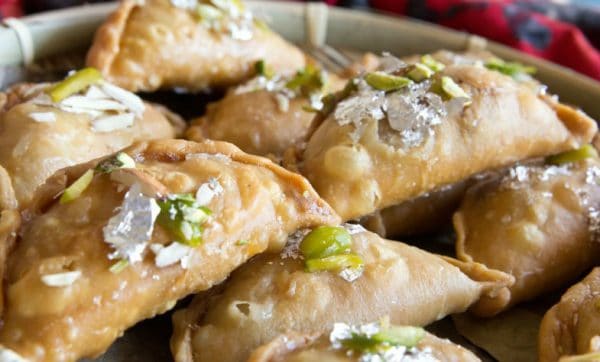
Gujiya
Baked Gujiya: The casing is made with whole wheat and semolina (suji) instead of refined flour (maida). It is then stuffed with nuts, baked perfectly and dipped in honey. This recipe is a dream come true for all the health fanatics.
Chocolate Gujiya: Make this gujiyas stuffed with mava and chocolate chips. Garnish with cream and chocolate sauce. Pockets made with all purpose flour are stuffed with khoya, nuts and tender coconut flakes. These are fried and dipped in sugar syrup.
Malpuas
Malpua is a traditional sweet of North India, it is a pancake like Indian dessert, fried in ghee and dipped in sugar syrup.

Malpua
Paneer Malpua: This version is made with cottage cheese and khoya. Add some kesar (saffron) for the lovely aroma and flavour.
Ragi Malpua: This is made with ragi flour, whole wheat and oats. All the big flavours, minus the guilt.
Bhang ki Pakori
Bhang is a popular intoxicating drink prepared during the festival of Holi. According to legend, bhang is considered to be an auspicious drink which was consumed by Lord Shiva.

Bhang ki Pakori
Thandai
A popular Holi staple – thandai! It is a fennel-fragrant concoction that has a natural cooling effect on the body. Welcome your guests to aroma of this traditional blend. You can make it before, store and serve whenever.

Thandai
Apple Kheer
Your favourite Indian dessert gets a fruity makeover! With red grapes, apples and cinnamon, it’s time to deviate from the obvious.
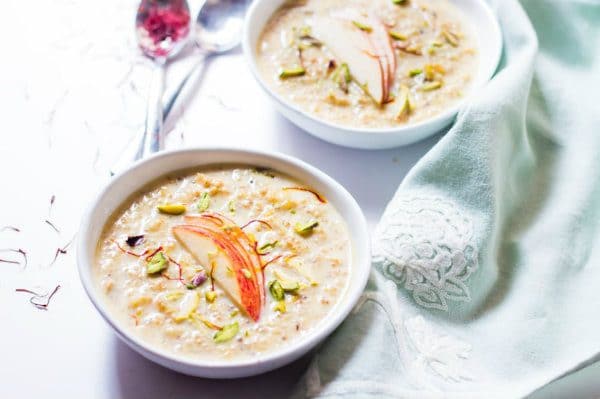
Apple Kheer
Almond Malai Kulfi
A rich, creamy concoction made with condensed milk, cream, dry fruits and saffron.
‘Bhang’ on…
Bhang is an edible preparation of cannabis. Traditionally it has been used in food and drink for centuries dating far back as 2000 BC in the Indian subcontinent. Bhang in India and Nepal is distributed during some Hindu festivals like Holi, Janmashtami, Shivarathri and consuming bhang on such occasions is common.
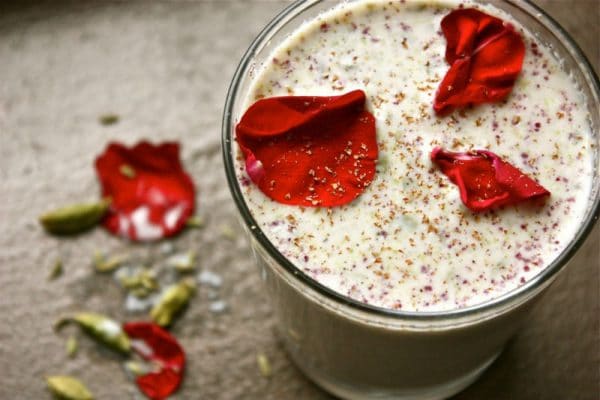
Bhang
In the ancient text Atharvaveda, Bhang is described as a beneficial herb that ‘releases anxiety’. Hindus associate it with their most powerful deity Shiva. Legend has it that Shiva brought bhang from the Himalayas for the pleasure of mankind.
In some parts of rural India, people attribute various medicinal properties to the cannabis plant. If taken in proper quantity, bhang is believed to cure fever, dysentery, sunstroke, to clear congestion, aid in digestion, appetite, cure speech imperfections and lisping and give alertness to the body.
Preparation of Bhang: Bhang is a preparation of powdered green inflorescence with curd. It is regarded as tasty and refreshing. It is legal in many parts of India and mainly sold during Holi, when pakoras containing bhang are also sometimes consumed. Uttar Pradesh has licensed bhang shops and in many places in India one can buy bhang products and drink bhang lassis.
The tradition of consuming bhang lassi during Holi is particularly common in North India where Holi itself is celebrated with fervor unseen elsewhere.



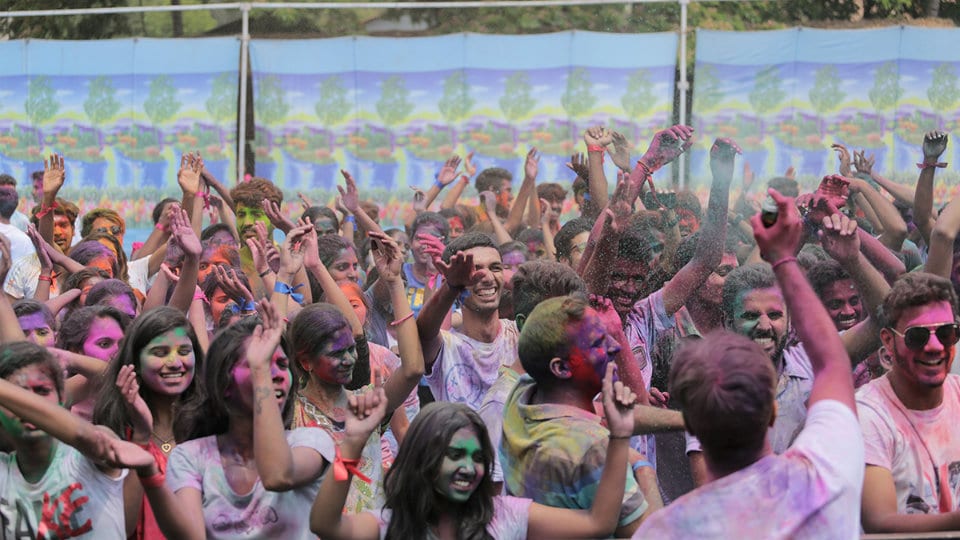

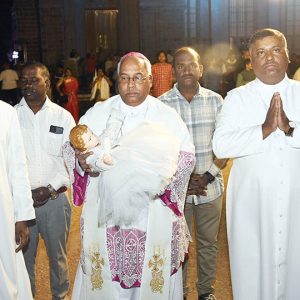

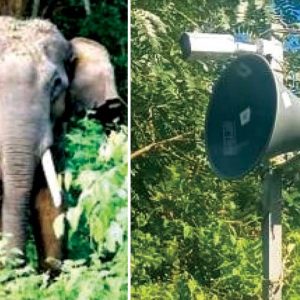
Recent Comments